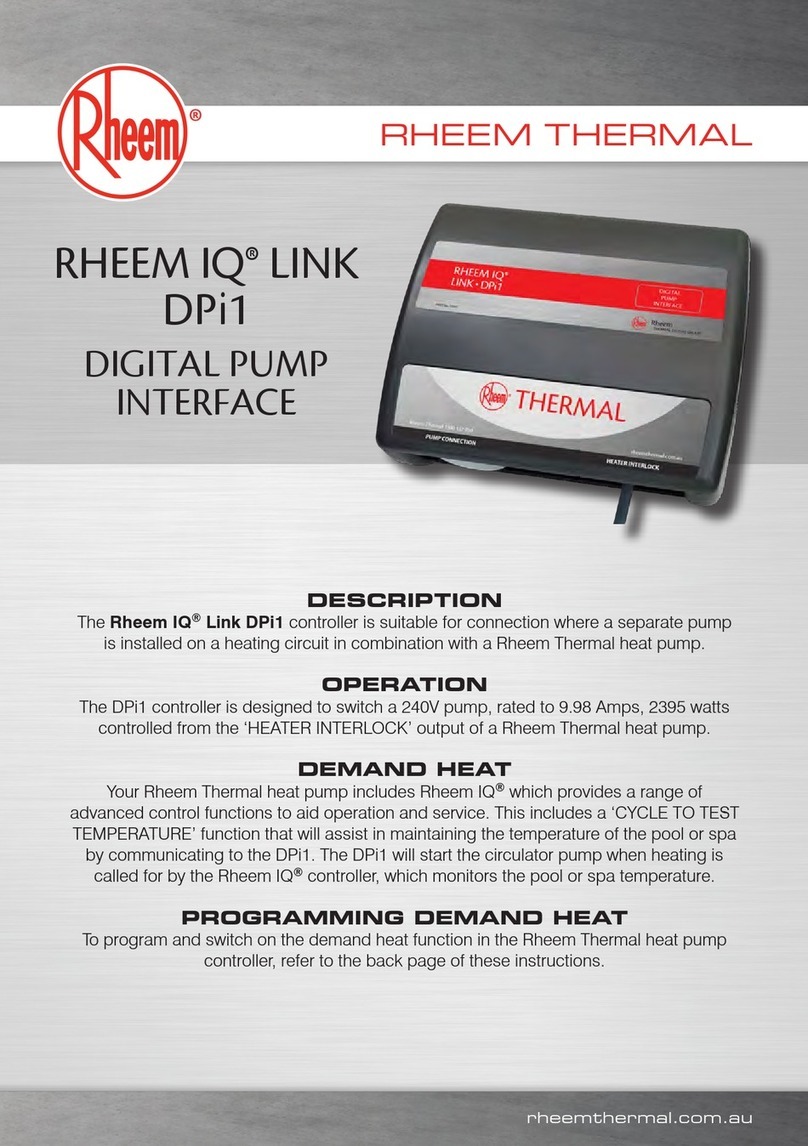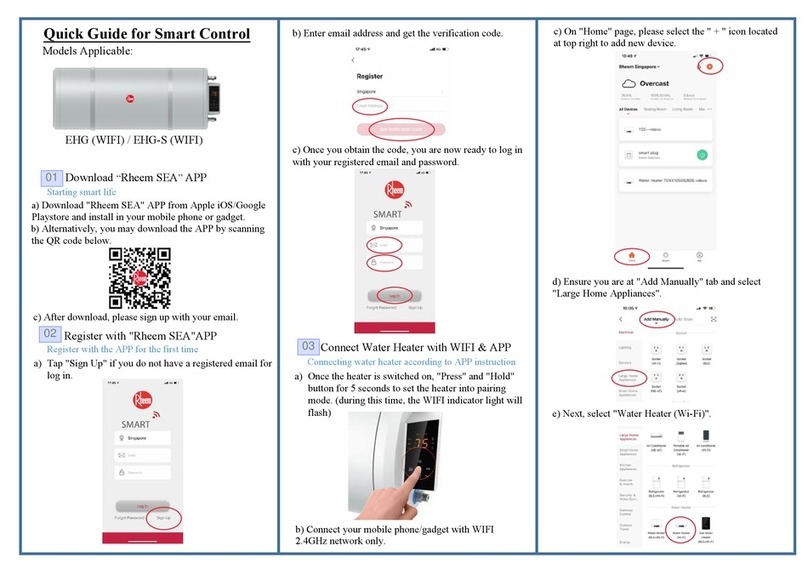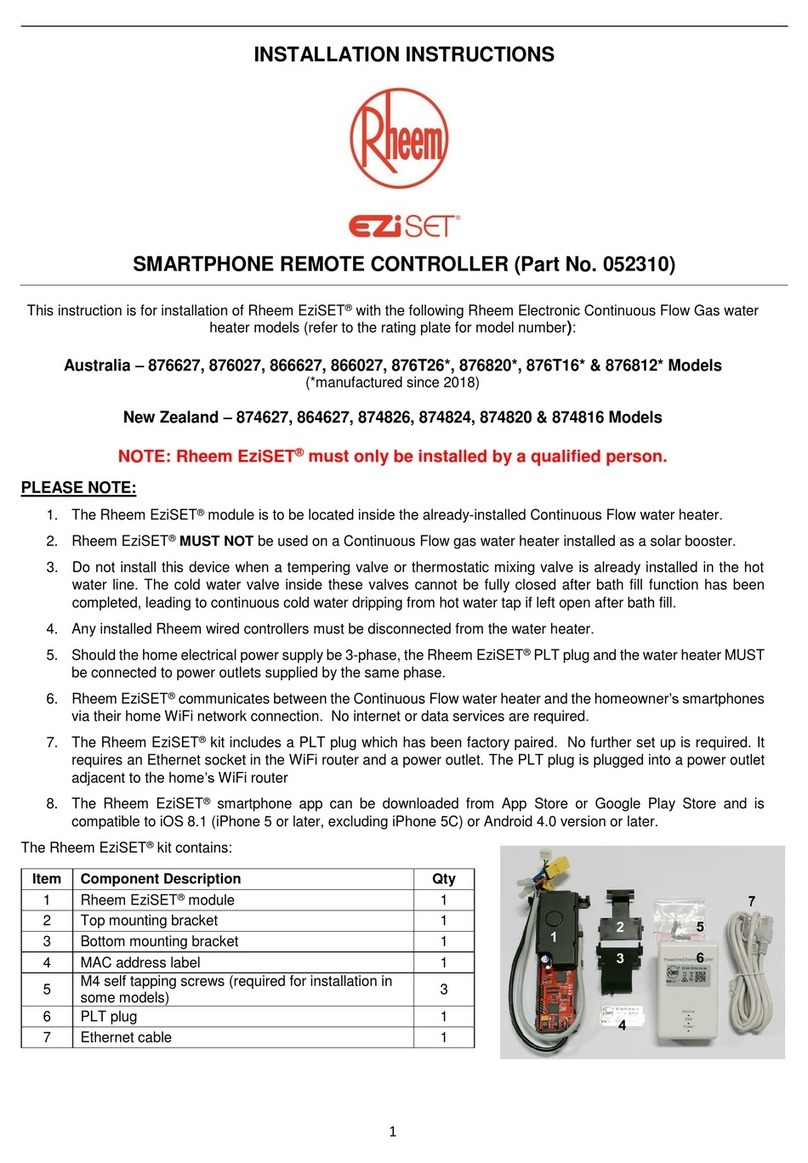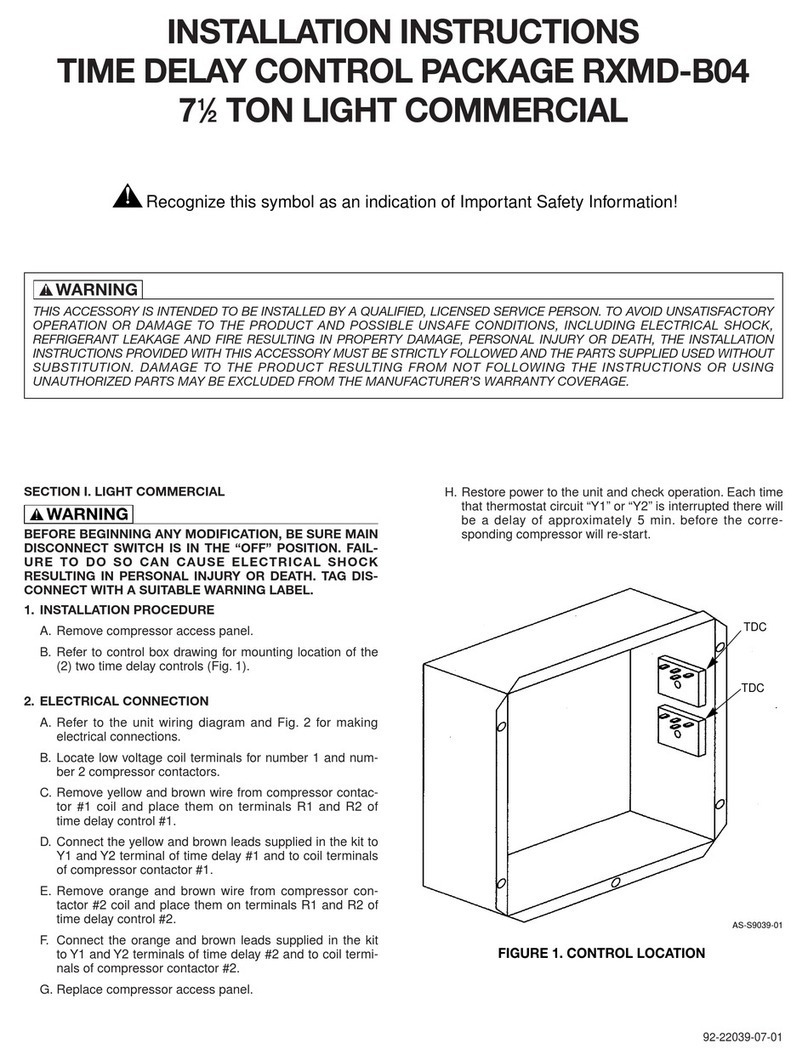6
HOW YOUR TARIFF CONTROLLER WORKS
Congratulations on your choice of a Rheem Heat Pump Tariff Controller. Rheem is committed to
environmental sustainability and continually strives to be innovative in product development to
help Australian households reduce their energy usage. Your Rheem heat pump and tariff
controller are a strong reflection of this commitment.
The heat pump that you have purchased is designed to be energy efficient and the tariff
functionality of the controller enables you to optimise heat pump and recirculating pump operation
relative to the price of electricity.
The main energy source for your heat pump is naturally available heat; either from surrounding
air, water or from the earth itself. These heat sources are totally renewable and provide up to four
fifths of the energy that the heat pump requires to operate. The remaining energy required is
supplied by electricity and it is this energy usage that the tariff controller focuses on to enable you
to achieve lower heating costs.
The structure and pricing of electricity varies from state to state and supplier to supplier. The
simplest pricing structure is a flat rate, however digital metering now allows for off-peak, shoulder
and peak-time electricity use tariffs. The pricing structure may also vary according to the time of
day or if it is a work day, weekend or public holiday and even in some instances according to the
season.
Where electricity has a time of use basis, the opportunity is created to achieve substantial savings
in heating costs because the price of electricity in off-peak hours can be less than one quarter of
the day peak-time rate!
Control options can be as simple as restricting heat pump operation to off-peak times only or to
off-peak and shoulder periods only. The more sophisticated option is to set varying target water
temperatures and differentials by time of day and day of the week. This sounds complicated but is
easily achieved by following the step by step procedures outlined in the 'Controller Operation'
section of these instructions.
The development of this controller included detailed evaluation of all Australian electricity tariffs
and some common tariff options are preloaded into the controller. In these instances all that is
required is to nominate the target water temperature settings (setpoint) and differentials for these
periods. Programming of every possible tariff option is also readily performed, allowing you to fully
customise heat pump and recirculating pump operation both in terms of temperature needs and
tariff pricing. This allows you to minimise your running costs while retaining the benefits of your
heating or cooling system.
HOW TO SET UP YOUR CONTROLLER
1. Read 'Controller Overview' and 'Operation Overview' sections on page 8.
2. Set current date and time (refer to 'Setting the Current Date & Time on page 9).
3. Set and enable tariffs (refer to 'Programming for Tariff Control' on page 10).
4. Set and enable scheduler times if this option is required (refer to 'Programming For Scheduler
Control' on page 11).
5. Adjust the setpoint temperature (refer to 'Adjusting the Setpoint Temperature' on page 12).
6. Set the circulating pump control method (Refer to 'Setting the Circulating Pump Control
Method' on page 13).
7. Turn heat pump ON (refer to 'To Turn the Heat Pump ON by the Keypad' on page 9).
Your heat pump tariff controller has now been configured and will automatically operate according
to the settings you have programmed.































